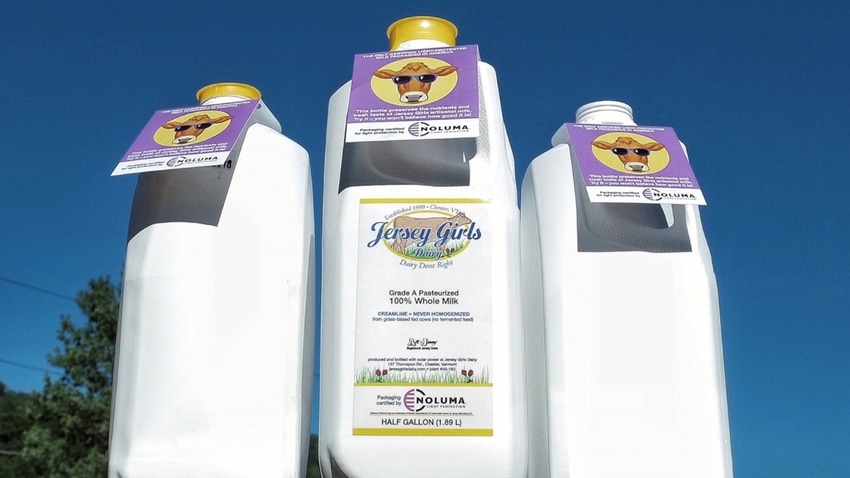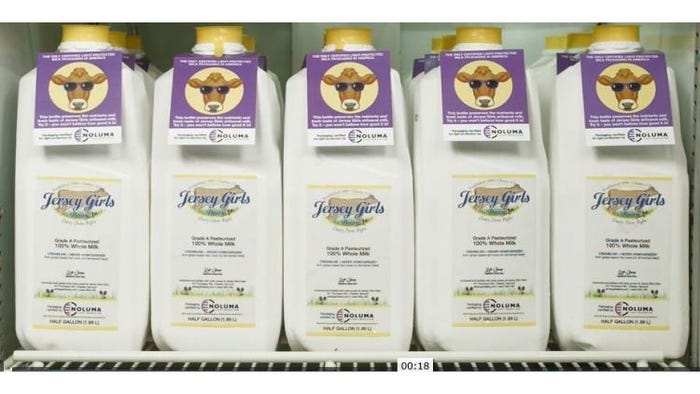
Light—both natural and artificial—is the enemy of many products, particularly foods. To help brand owners develop light-protective food packaging, Noluma International LLC uses proprietary light-protection technology for package measurement, assessment and certification.
As a services provider, Noluma works with clients and packaging suppliers to develop packaging with the highest level of light protection. Div Chopra, Noluma’s president and CEO, answers Packaging Digest’s questions about the company’s technology and services.
What types of products do Noluma’s clients sell?
Chopra: Noluma-certified materials can be used in a variety of consumer-goods segments, including dairy, edible oils, pharmaceuticals, cosmetics, juices, other beverages and more.
Who are Noluma’s typical clients—food companies or packaging-material manufacturers?
Chopra: Noluma services benefit consumer-goods companies in a variety of industries. However, Noluma is currently most focused on working with dairy companies due to the immense damage that indoor lights have on the taste and inherent nutrition in these types of products.
To illustrate this damage, food scientists who have studied light’s impact on milk’s nutritional value have found that:
• After only two hours of exposure to lights typically found in retail dairy cases, milk begins to lose vitamin A.
• After 16 hours of dairy-case light exposure, less than half of the vitamin A (49%) remains in nonfat milk in a typical plastic bottle.
• After one hour of sunlight exposure, riboflavin nutrients in pasteurized whole milk drop by 28%.
• After 14 days of retail light exposure in a polyethylene terephthalate (PET) bottle, there is a significant decline in nutrients in fortified, reduced-fat ultra-high temperature (UHT) milk (45% riboflavin loss, 60% vitamin A loss and 80% vitamin D loss).
• And after 12 weeks of light exposure in a retail setting, UHT milk’s nutritional value declines dramatically (93% vitamin A loss, 100% vitamin B2 loss and 66% vitamin D loss).
Can you provide any specifics about the technology Noluma uses to assess the light-protection capacity of packages?
Chopra: Noluma measures and assesses packaging’s light-protection capacity based on the content change of what’s inside.
Using patented technology, we test for the light-sensitive ingredient in a variety of products that change negatively when exposed to all forms of light, including LED home lights, refrigerator lights and retail fluorescent lights.
For example, we use riboflavin (vitamin B2) as a marker for measuring light exposure’s impact on dairy products, because it acts as a catalyst for the decreases in other vitamins.
The technology that Noluma uses replicates two weeks of light exposure and evaluates the change in contents in just two hours. As the marker decreases, we know that the qualities of the product—freshness, level of nutrition and such—also diminish.
Noluma then pinpoints the optimal point of total light-block at which content change ceases to exist and designs packaging options to achieve this.
How are you able to speed up light-exposure time and guarantee test results?
Chopra: Noluma brought together innovations in chemistry, analytics and engineering with our diverse technical team to solve challenging interdisciplinary problems. Noluma has invented a means to simulate the impact of light exposure in highly accelerated time frames. The accuracy and precision of the method have been documented in peer-reviewed publications.
How does Noluma measure damage to markers?
Chopra: Noluma has technology to monitor different marker systems and uses advanced analytical methods to detect the changes of interest that occur when the marker is exposed to light. In some cases, multiple changes in the marker system are simultaneously tracked using complementary analysis methods, such as spectroscopic techniques and chromatography. Noluma technology is customized to detect what matters to the contents being protected. [See U.S. Patent No. 9,638,679.]
What type of light do you use to evaluate products in test packages?
Chopra: Noluma uses a broad-spectrum conditioned light source that is controlled for both spectrum and intensity. A typical measurement uses the full light spectrum to provide a comprehensive evaluation of the impact of light exposure, although the technology can focus on bands within the spectrum when this aids in the research.
What types of package structures does Noluma test?
Chopra: Almost any product can be negatively impacted by indoor lights, such as LED or fluorescent lights, so all packaging can be improved to enhance its light-protection qualities using insights gathered through our testing-and-measurement process. We can measure, assess and guide the packaging design for all types of packaged goods—regardless of material, shape or contents. Noluma then certifies the end packaging to assure consumers of light protection.
The uniqueness of our technology is that it measures the light protection of packaging in relation to the primary change agent in its contents. When our standards are met, Noluma is able to certify that a package offers light protection that consumers can trust.
Different types of packaging and different kinds of products can have varying levels of light protection, and while we can test and advise on any type of packaging and any type of product, we only certify packaging that meets our performance standards.
When Noluma makes recommendations for packaging that will provide better light protection, what does that advice include (such as, packaging materials, structure, seal, closure)?
Chopra: Yes, all of the above—from materials to decorative and protective wraps to packaging structure or type of seal and closure. The testing allows manufacturers to better understand the vulnerabilities of their packaging and work with Noluma to design packaging that better blocks the degradation of nutrients, taste and efficacy caused by light exposure.
When recommending packaging materials that provide better light protection, are you able to suggest transparent packaging options?
Chopra: Yes, we can work within the requirements of our customers and work with partners to develop the type of packaging design that meets their needs while preventing light damage. We can achieve or verify the maximum possible light protection for any type of packaging.
Has the selection of UV-blocker additives for polymers expanded? Are many such additives available to packagers and their suppliers?
Chopra: Noluma is a services company and does not sell such materials. We work with your convertor or bottler to find the best quality solutions.
How do brand owners test for product degradation now?
Chopra: Manufacturers are well equipped to assess product degradation in their industries and do everything they can to secure the integrity of their contents. However, the causes of light damage and its effects are newfound knowledge in many industries, which in the past attributed such damage to content quality and not to indoor lights.

The Noluma logo on a package tells consumers the product has been protected from light damage throughout the product's shelf life.
What does the Noluma certification signify? How do consumers know if a product is Noluma certified?
Chopra: A Noluma logo certifies that packaging meets the gold standard for light protection and that the packaging helps to ensure that product has the quality, freshness and nutritional qualities it promises.
Noluma certification means that a product or food’s freshness, nutrition, efficacy and sensory qualities are protected as best as scientifically possible from light exposure throughout the full shelf life of the product.
Most Noluma-certified packages have the Noluma logo, and this signifies authenticity of light protection. Consumers can ask their favorite brands if they’re light-protected, and if they aren’t, they should ask if they will be.
Consumers must also be wary of brands that claim to provide light protection when they do not. It’s like the sun protection factor (SPF) in suntan lotion: An SPF of 10 or 15 does not do much to protect our skin from sun damage.
********************************************************************************
EastPack 2019 (June 11-13) is the region's premier packaging event connecting professionals from companies like PepsiCo, Pepperidge Farms and Mars with suppliers offering the latest packaging technologies, including a range of automation solutions, from semi-automatic equipment to sophisticated "smart" systems. Register to attend today!
About the Author(s)
You May Also Like




